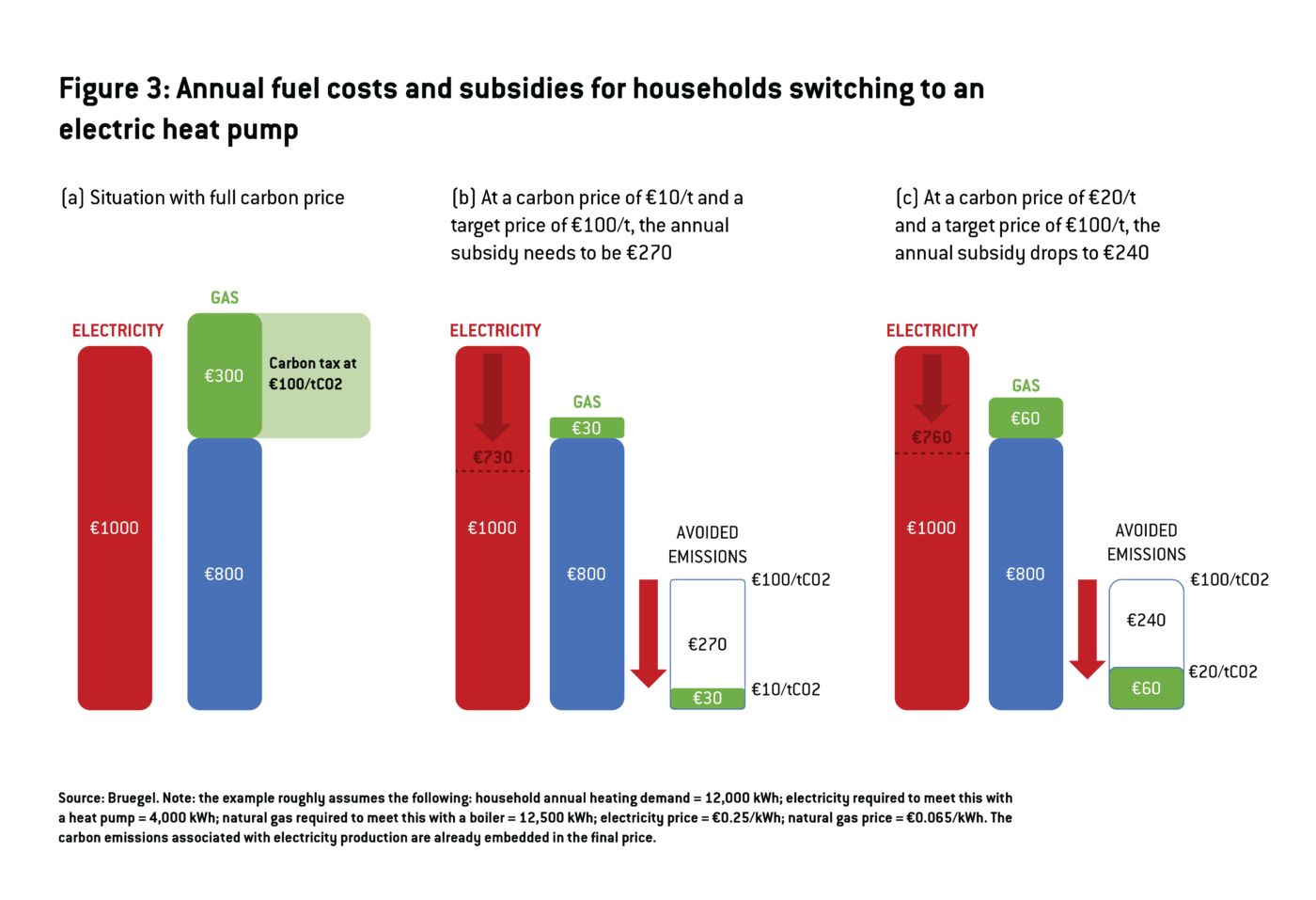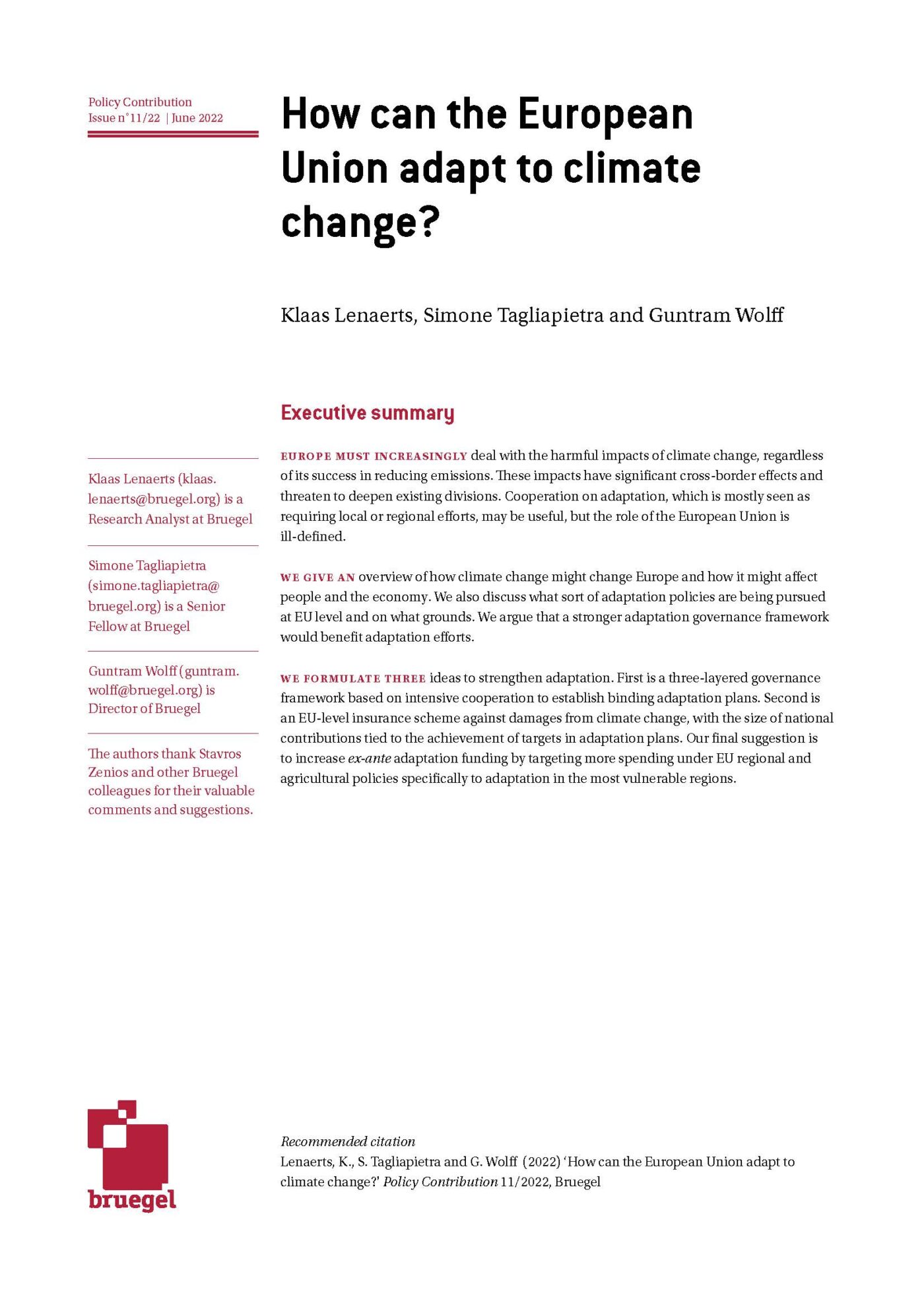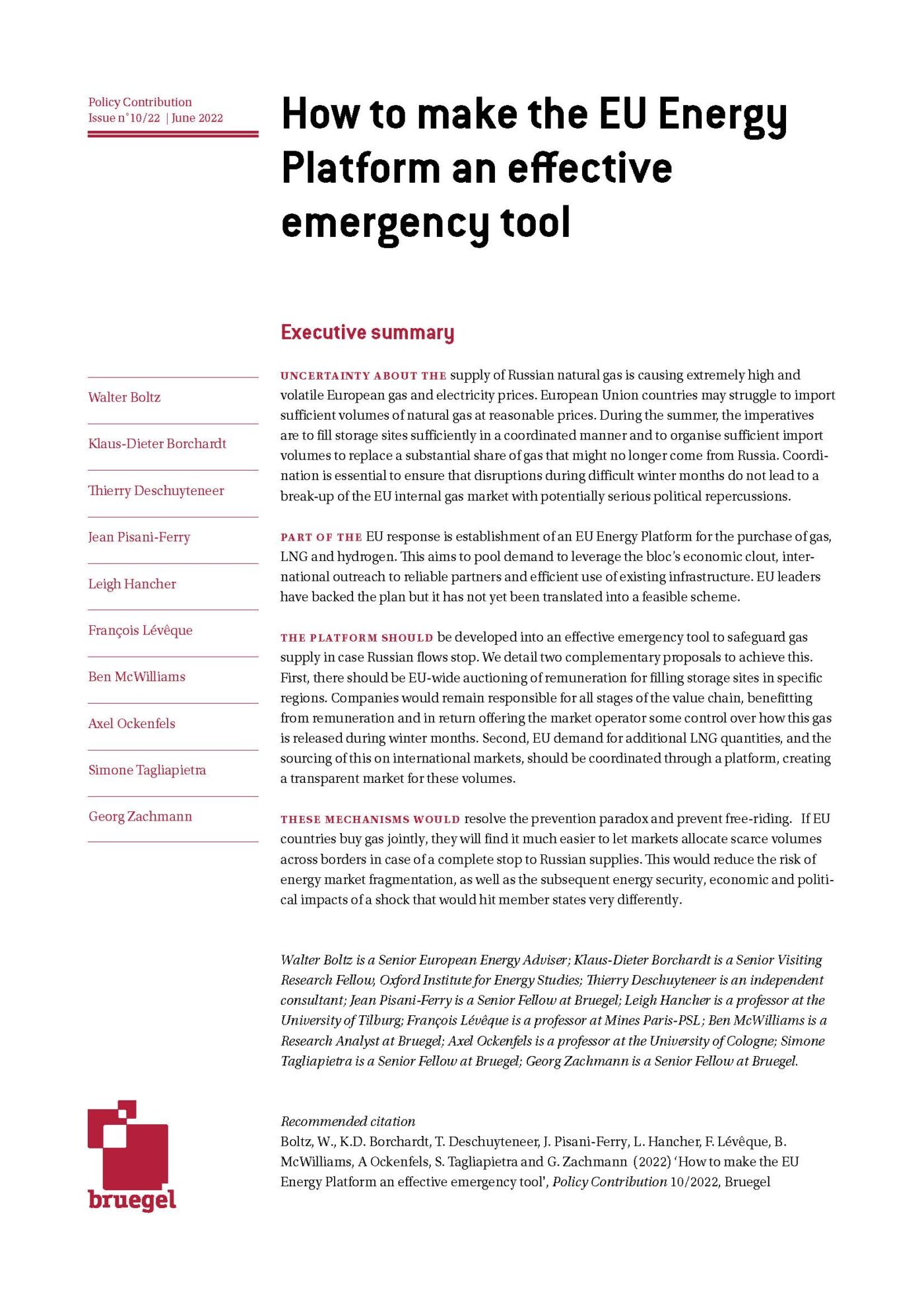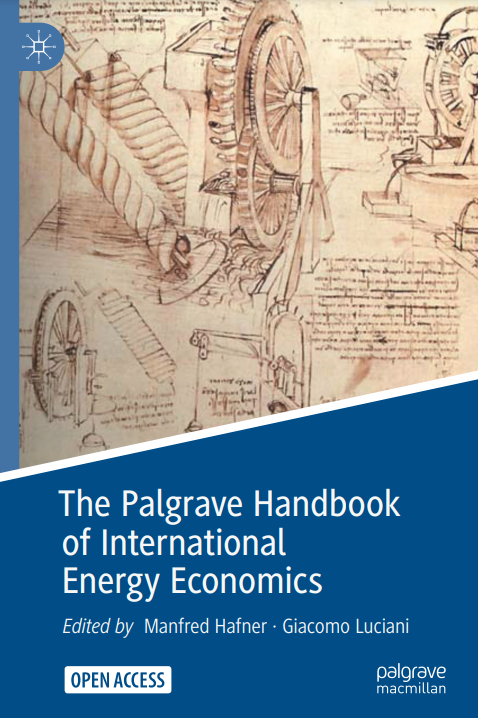Blog Post
Making sure green household investment pays off
Policies are needed to support green fuel switching by households; support should be phased out as the carbon price rises.
The first stage of decarbonisation in Europe was characterised by incremental improvements in energy efficiency and by replacing fossil fuels in electricity generation. To meet the EU’s ambitious 2030 targets, which will involve a reduction in annual greenhouse-gas emissions from about 3,600 million tonnes (2015 figure) to 2,100 million tonnes, it is now essential for households to switch from fossil fuels in transport and heating to clean alternatives. European Commission modelling indicates that almost a quarter of the total emissions reduction up to 2030 will have to come from road transport and residential heating, requiring annual investments of €800 billion. Consumers will have to pay much of this.
To bring decarbonisation to the level of households, the European Commission has proposed the introduction of a second emissions trading system for buildings and road transport. At the same time, governments must develop policies to ensure that it is economically feasible for households to switch to clean alternatives.
This presents a twofold challenge to governments:
- In certain cases, clean-fuel appliances still cost more than dirty-fuel equivalents;
- In other cases, installing new clean-fuel appliances is cheaper than new dirty-fuel equivalents, but not cheap enough to encourage the replacement of already installed dirty-fuel appliances. Therefore, households will wait until appliances reach the end of their lives, resulting in a turnover of capital stock that is too slow.
The mispricing of fuels with respect to climate targets is a major contributor to this. For example, in the second half of 2020, the average EU consumer price of a kilowatt-hour of electricity (which might come from renewable sources) was more than three times the price of a kilowatt-hour of natural gas, with significant variation by country (Figures 1 and 2). This is driven by more expensive wholesale prices and additional taxes. Naturally, this influences consumer behaviour. For example, the adoption of electric heat pumps has historically been inversely related to the oil price (traditionally, oil played a bigger role in household heating).
Carbon pricing is the economist’s go-to solution for correcting this. Theoretically, an ambitious and ever-increasing price could eliminate all emissions associated with households. However, relying only on carbon pricing would result in unacceptably high costs for some during the transition, and would have distributional consequences.
This was already accepted for industrial and power companies whose carbon pricing journey began in 2005, with the introduction of the EU emissions trading system. It has taken four ETS revisions and 16 years for the policy to be widely accepted as having reached a sustainable and appropriate level. Along the way, complementary policies were required, and more are still forthcoming. Not least, excessive use has been made of free allowances to smooth the gradual transition toward higher prices.
The speed of climate change does not permit a similar 15-year journey before carbon prices rise to the levels needed to stimulate green investments by households. However, too-swift implementation of carbon pricing at household level could provoke resistance to a greater degree than seen at company level. Policymakers must therefore implement policies to complement the gradual implementation of carbon pricing. Such complementary policies should be designed swiftly and communicated clearly to the public.
We propose one such tool: public subsidies to link the prices of clean fuels to prices for the dirty fuels they replace and the associated saved carbon emissions. This tool could be implemented quickly at national level. It would create an enabling framework for green household investments before the carbon price reaches sufficient levels. This would provide much needed stimulus for companies and jobs in clean-fuel industries, allowing them to develop the technological and financial know-how to drive down costs.
The idea of linking the prices of old and new fuels is not new. When natural gas started to be used in the 1960s and 1970s, pegging the gas price to the oil price was common in Europe. The gas price was pegged to heating oil prices when used in residential heating, and to heavy fuel oil prices when used in industry and power generation. Between 1960 and 1990, many bilateral natural-gas contracts were based on oil-indexing because companies felt that consumers knew and understood this risk. We take inspiration from this example.
How would it work?
A form of insurance would be offered to consumers so that when they invest in fuel-switching (for example, by installing an electric heat pump), the clean fuel will always be cheaper than the displaced fossil fuel. This would involve a fixed price paid to consumers for the reduction in carbon emissions associated with their investment. The amount of subsidy would be calculated annually, and would depend on total usage of the appliance.
Figure 3 illustrates how the system would work by comparing natural gas and an electric heat pump as alternatives for household heating. If, say, in 2030, the carbon price is €100/tonne, the operating costs of the heat pump will be lower than that of a natural gas boiler (panel A).
Household contracts would in effect bring forward this scenario for households that wish to invest today rather than waiting until 2030. Households would be guaranteed a price of, say, €100/tonne for the annual carbon emissions avoided by installing a heat pump (the third column in panels b and c of Figure 3). With no carbon price in place (currently, many EU countries do not explicitly tax the carbon content of fuels used for household heating), this would involve them being paid their annual emission reduction multiplied by the target carbon price. As a carbon price on natural gas is gradually implemented, the household would be paid the difference between that year’s carbon price and the target price (panel b). In this way the subsidies they receive would be phased out as the actual carbon price increases (panel c).
With a high enough target price, annual payments should ensure that clean-fuel appliances are cheaper than their dirty competitors. But if governments wish, they can also offer contracts that take fuel price fluctuation risks off the shoulders of consumers. Guarantees that clean fuels will always be cheaper than fossil fuels could assuage concerns that decreasing demand for fossil fuels will actually make them very cheap, and hence early adopters of clean technology risk becoming worse off than households that stick with fossil-fuel boilers or cars. This could be done by topping up annual subsidy payments in case they do not already reduce the clean fuel price below dirty fuel price.
Meanwhile, governments could insert sunset clauses into contracts so that support is phased out if the clean fuel price decreases over time. For example, support would not be distributed in years when the clean fuel already provides a substantial cost saving. Clean fuel prices should fall as governments gradually remove taxes and levies on green fuels (see German discussion) and with increased subsidy-free renewable electricity deployment. The proposed revision of the EU Energy Taxation Directive is an important step toward this.

The subsidies would not be too expensive. For example, Germany has 40 million households. Assuming optimistically that 10% of households participate in the scheme, maximum payments in a single year would be some €2 billion. This would assume individual payments of €200, which would only be likely in the first years of operation before carbon prices increase. For comparison, the recent German ETS extension into buildings and transport is expected to deliver €40 billion in revenues from 2021 to 2024.
The main advantage of the contracts is that they would adjust to carbon prices and fuel consumption. This means that:
- Support is phased out as the carbon price increases. This allows governments to more credibly commit to long-term policy support. This element was missing from solar electricity support schemes in Europe, which were characterised as ‘boom and bust’. Support policies quickly became too expensive and were suddenly scrapped, damaging the development of supply and installation markets within the EU.
- Investment is encouraged where it will have a direct impact on reducing emissions, because the subsidy is calculated according to fuel consumption. For example, a consumer faces a larger pay-off from installing a heat pump in the house where they live, rather than from purchasing an electric vehicle as an extra and infrequently used car. Households getting cheques for the emissions they save would encourage others to participate.
While contracts could play an important role in household decarbonisation, they are not by themselves sufficient. Other deployment policies, such as investment support or targeted support for adoption by low-income households, would still be needed. And contracts would be very much intended to be complementary to the gradual phase-in of a high carbon price.
A significant shortcoming is that consumers may not be sufficiently motivated to pay large upfront capital for something that promises pay-out over the next 20 years. Thus, capital-cost schemes are likely to have a greater influence on adoption of low-carbon alternatives than operational-cost schemes. However, contracts would significantly reduce the risks associated with upfront investment and the financial sector and private aggregators will find it more attractive to help households exploit the more predictable positive returns from clean investments.
Finally, support for the operation of low-carbon products is most beneficial for those consumers with access to the capital required for upfront investments. The policy might therefore not be accessible for capital-constrained households. Complementarity policies to enable poorer households to benefit would still be needed (for example, the Social Climate Fund proposed by the Commission).
The achievement of the 2030 climate target necessitates a significant increase in household low-carbon investment. Policies such as carbon taxation and regulation are essential to ensure this happens. But it is also important for government to show solidarity with households. The implementation of the contracts we have described would be a fair, transparent and low-cost way to do so.
Recommended citation:
McWilliams, B. and G. Zachmann (2021) ‘Making sure green household investment pays off’, Bruegel Blog, 19 July
Republishing and referencing
Bruegel considers itself a public good and takes no institutional standpoint. Anyone is free to republish and/or quote this post without prior consent. Please provide a full reference, clearly stating Bruegel and the relevant author as the source, and include a prominent hyperlink to the original post.









